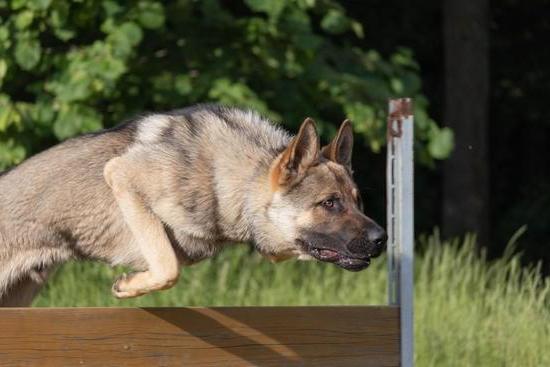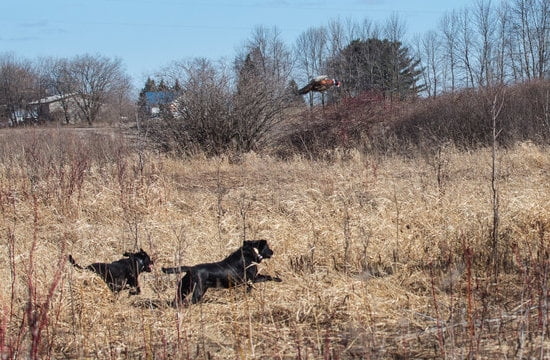Are you looking for a unique and effective approach to training your furry friend? Look no further than Bubble Theory Dog Training. This innovative method of training has been gaining popularity among dog owners and trainers alike, thanks to its positive and practical approach. Using the principles of bubble theory, this training method focuses on creating a safe and controlled environment for your dog’s learning, making it easier for them to understand and follow commands.
Bubble theory dog training revolves around the idea of creating a “bubble” or safe space around your dog, where they feel comfortable and secure. By understanding this concept, you can effectively communicate with your pet and build a strong bond based on trust and respect. In this article, we will dive into the principles of bubble theory, its benefits in dog training, practical application techniques, common misconceptions, success stories, and tips for implementing this approach in your daily routine.
From enhancing communication between you and your pet to building trust and obedience, bubble theory dog training offers a range of benefits that make it worth exploring. Whether you’re a new dog owner or an experienced trainer, incorporating bubble theory into your training routine can lead to remarkable results.
So if you’re curious about how this method works or simply looking for a fresh perspective on dog training, read on to discover the world of bubble theory dog training.
Understanding the Principles of Bubble Theory
What Is Bubble Theory?
Bubble theory dog training is a concept that focuses on creating a “bubble” around your dog, where you become the center of their world and everything else becomes secondary. This theory emphasizes the importance of building a strong relationship with your dog based on trust, respect, and positive reinforcement.
The Importance of Relationship Building
One of the key principles of bubble theory dog training is the emphasis on building a strong relationship with your dog. This means understanding their needs, preferences, and behavior patterns. By focusing on developing a deep bond with your canine companion, you can effectively communicate with them and create a positive training environment.
Positive Reinforcement and Boundaries
Another important principle of bubble theory is the use of positive reinforcement to encourage desired behaviors while setting clear boundaries for unwanted behaviors. This approach helps to build confidence in your dog while also establishing rules and expectations. By using reward-based methods, you can motivate your dog to make choices that align with your training goals.
By understanding these fundamental principles of bubble theory, you can lay the foundation for successful dog training and create a harmonious relationship with your furry friend based on trust and mutual respect.
Benefits of Using Bubble Theory in Dog Training
The Science Behind Bubble Theory
Bubble theory in dog training is based on the idea that dogs, like humans, have their own personal space, or “bubble,” that they use to navigate and interact with the world around them. When applied to training, bubble theory emphasizes the importance of respecting a dog’s personal space and using positive reinforcement to build trust and communication.
Improved Communication and Relationship Building
One of the key benefits of using bubble theory in dog training is the improved communication and relationship building between the dog and their owner. By respecting the dog’s personal space and using positive reinforcement techniques, such as treats or praise, owners can create a strong bond with their furry companions. This can lead to a more cooperative and willing attitude from the dog during training sessions.
Reduced Stress for Your Dog
Another benefit of bubble theory in dog training is the potential for reduced stress for your furry friend. By understanding and respecting their personal space, owners can avoid overwhelming or intimidating their dogs during training. This can lead to a calmer, happier pet who is more open to learning new commands and behaviors. Ultimately, by incorporating bubble theory into your dog’s training routine, you can create a positive and enriching experience for both you and your canine companion.
Practical Application of Bubble Theory in Training Your Dog
Bubble Theory Dog Training is a revolutionary approach to training our furry companions. This method takes into consideration the concept of personal space, communication, and positive reinforcement to build a strong bond between dogs and their owners. The practical application of Bubble Theory in training your dog involves understanding how your dog perceives its environment and using this knowledge to effectively communicate with them.
One key principle of Bubble Theory is the idea of respecting your dog’s personal space. By understanding their individual comfort zone, you can create a sense of trust and security that is crucial for effective training. For instance, when using positive reinforcement such as treats or praise, it’s important to remain within the dog’s “bubble” to avoid causing any stress or discomfort.
Another practical application of Bubble Theory in dog training involves clear communication and body language. Dogs are highly attuned to non-verbal cues, so it’s essential to be aware of your own body language when interacting with them. Using consistent signals and commands within their comfort zone can help reinforce desired behaviors and create a harmonious training experience for both owner and pet.
Implementing Bubble Theory in your daily training routine requires patience, consistency, and emotional intelligence. It’s about creating a positive environment for learning and shaping behavior through respectful communication. When done correctly, this approach can lead to happier, well-adjusted dogs with a strong bond with their owners.
| Key Principle | Application |
|---|---|
| Respect Personal Space | Avoid encroaching on your dog’s bubble during positive reinforcement |
| Clear Communication | Use consistent signals within the dog’s comfort zone |
| Patient Consistency | Create a positive learning environment through respectful communication |
Common Misconceptions About Bubble Theory Dog Training
There are several common misconceptions about bubble theory dog training that may prevent dog owners from using this effective method to train their pets. It is important to address these misunderstandings in order to fully appreciate the benefits of using bubble theory in dog training.
Some of the most prevalent misconceptions about bubble theory training include:
- Belief that it is only suitable for certain breeds: Contrary to popular belief, bubble theory dog training is not limited to specific breeds. This method can be effective for all types of dogs, regardless of their breed or size.
- Assumption that it requires expensive equipment: Many people believe that implementing bubble theory in dog training requires costly tools or equipment. In reality, all you need is a basic understanding of the principles and consistent practice with your pet.
- Myth that it involves harsh punishment: Some individuals mistakenly think that bubble theory training involves harsh discipline or punishment. However, the essence of this approach is to create a positive and nurturing environment for your dog to thrive in.
By debunking these misconceptions, more dog owners can feel confident in adopting bubble theory as a valuable method for training their beloved pets. It’s essential to educate others on the true nature and benefits of using bubble theory in dog training.
Ultimately, by dispelling these myths and misconceptions surrounding bubble theory dog training, more pet owners can embrace this innovative approach with confidence and see positive results in their furry companions’ behavior and obedience. With patience, consistency, and understanding, anyone can successfully implement bubble theory in their daily training routine.
Success Stories of Dog Owners Using Bubble Theory Training
Many dog owners have found great success in using the bubble theory dog training method with their pets. One such success story is that of Sarah and her dog, Max. Sarah had struggled for months to train Max to walk calmly on a leash without pulling. She had tried various methods with little success until she discovered bubble theory training.
After implementing the principles of bubble theory, Sarah noticed significant improvements in Max’s behavior. By creating a “bubble” of calm and positive energy around herself, Sarah was able to communicate her expectations to Max more effectively. Within just a few weeks, Max was walking by her side without pulling, and their walks became much more enjoyable for both of them.
Another success story comes from Jack, who used bubble theory training to help his rescue dog overcome separation anxiety. By establishing a calm and positive environment at home and using gentle reinforcement techniques, Jack was able to gradually help his dog feel more secure when left alone. Over time, the dog’s anxiety decreased significantly, and Jack was able to leave the house without his pet experiencing distress.
These success stories highlight the effectiveness of bubble theory dog training in addressing various behavioral issues in dogs. By understanding and applying the principles of this training method, many dog owners have been able to build stronger bonds with their pets and create harmonious relationships based on mutual trust and respect.
| Success Story | Training Issue |
|---|---|
| Sarah and Max | Leash walking without pulling |
| Jack and Rescue Dog | Separation anxiety |
Tips for Implementing Bubble Theory in Your Daily Training Routine
Training your dog using the bubble theory approach can be highly effective in achieving long-lasting behavior changes. Here are some practical tips to help you implement bubble theory in your daily training routine:
- Consistency is Key: To effectively implement bubble theory in your dog training, consistency is crucial. Make sure to establish and stick to a routine that includes regular training sessions and clear communication with your dog.
- Set Clear Boundaries: It’s important to set clear boundaries for your dog within their “bubble.” This means both physical boundaries, like where they are allowed to be in your home, and behavioral boundaries, such as what behaviors are acceptable and unacceptable.
- Use Positive Reinforcement: In bubble theory dog training, positive reinforcement is essential. Rewarding your dog for good behavior within their bubble will reinforce those behaviors and encourage them to continue acting accordingly.
In addition to these tips, it’s important to remember that every dog is different, so it’s essential to tailor your bubble theory training approach to suit your individual dog’s needs. Be patient and understanding as you work with your furry friend, and remember that building a strong bond based on trust and respect is at the core of successful bubble theory dog training.
Ultimately, by implementing these tips into your daily training routine, you can effectively harness the power of the bubble theory approach to create a harmonious and well-behaved relationship with your beloved pet.
Conclusion
In conclusion, Bubble Theory Dog Training offers a unique and effective approach to working with our canine companions. This innovative training method is based on the principles of understanding and utilizing the natural “bubble” that exists between a dog and their handler. By recognizing and respecting this personal space, handlers can build a stronger connection with their dogs, leading to more successful training outcomes.
The benefits of using Bubble Theory in dog training are numerous. By incorporating this method into your daily routine, you can expect to see improvements in your dog’s obedience, focus, and overall behavior. Additionally, many dog owners have reported feeling a deeper bond with their furry friends as a result of implementing Bubble Theory techniques. This personalized approach to training allows for better communication and understanding between dogs and their handlers.
As the popularity of Bubble Theory Dog Training continues to grow, it’s clear that this method represents the future of canine obedience. With its proven success stories and practical applications, more and more dog owners are embracing this innovative approach to training.
By following the tips for implementing Bubble Theory in your daily routine, you can set yourself and your furry friend up for a harmonious and fulfilling relationship based on mutual respect and understanding. As we move forward, Bubble Theory Dog Training will undoubtedly play an increasingly significant role in shaping the way we work with our beloved canine companions.
Frequently Asked Questions
Does the Bubble Theory Work for Dogs?
The Bubble Theory, also known as the “two-week shutdown,” can be effective for some dogs, but it’s not a one-size-fits-all solution. It involves giving the dog time and space to adjust to their new environment without overwhelming them.
How Do You Train a Reactive Dog Not to Bark?
Training a reactive dog not to bark requires patience, consistency, and positive reinforcement. It’s important to identify the triggers that cause the reactive behavior and then gradually desensitize the dog to those triggers through training and counter-conditioning.
Can Leash Reactivity Be Cured?
Leash reactivity in dogs can be managed and improved, but there may not be a “cure” in the traditional sense. With proper training, behavior modification, and perhaps the help of a professional trainer or behaviorist, leash reactivity can be significantly reduced or controlled to a manageable level.

Welcome to the blog! I am a professional dog trainer and have been working with dogs for many years. In this blog, I will be discussing various topics related to dog training, including tips, tricks, and advice. I hope you find this information helpful and informative. Thanks for reading!





